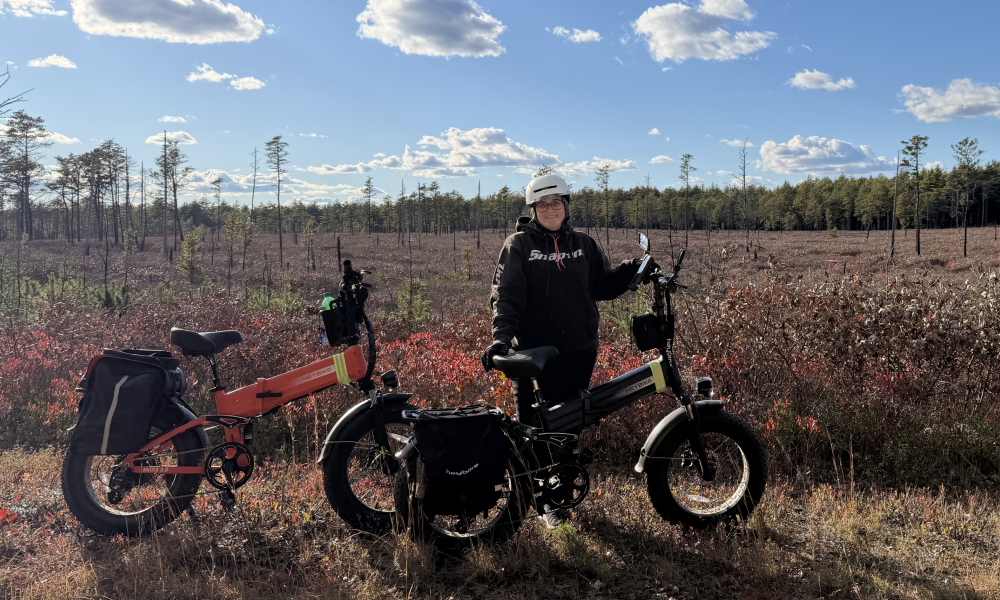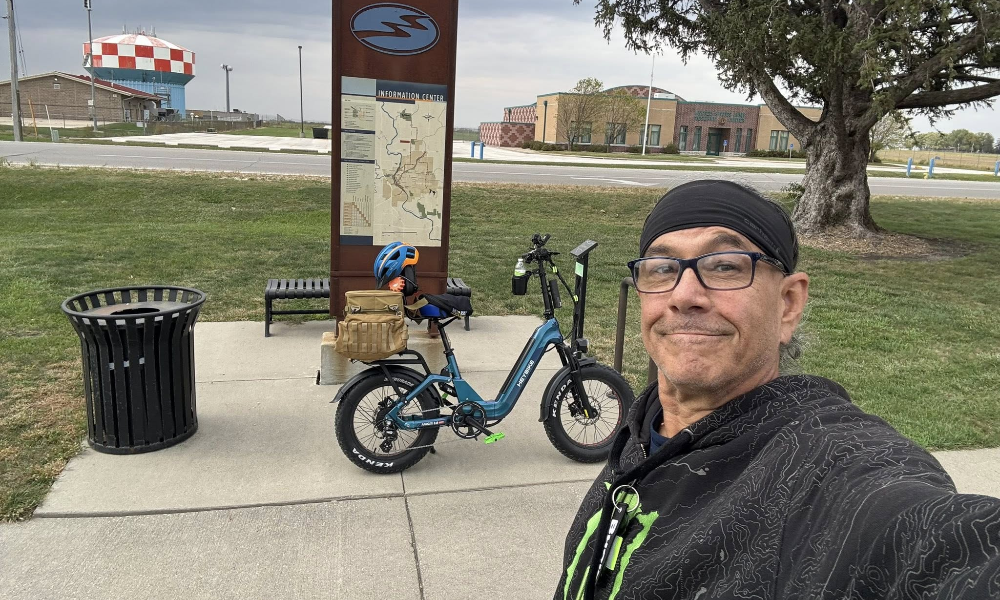Mountain biking is a hobby that appeals to people of all ages and skill levels. It is a terrific way to exercise and find new areas. The popularity of mountain riding has grown in recent years. It has an incredible development in electric mountain bikes (e-MTBs).
A beginner mountain biker recalls their first experience: It makes sense that you are riding a bicycle. Yet it seems silly at first because you are riding over rocks, across streams, and many other terrains.
Mountain biking is now more available to people of all fitness levels. E-MTBs can let you ride further and faster than you could on a typical mountain bike. These bikes are notable for their powerful motors, long battery life, and sturdy build.
It is thrilling, but it is also frightful and nerve-racking. With time, it becomes more enjoyable and easy. There are a few tips and strategies that each of us wishes someone had given us when we were first starting. When you are first starting on the mountain bike, consider these 10 helpful tips.

How to Choose the Right Bike
It is critical to choose the correct mountain bike before hitting the trails. Consider the following factors:
- Bike Type
Mountain bikes have two types a hardtail and a full suspension. Select one according to your riding tastes and local terrain.
Different riding techniques need various bike models. Where and how you intend to ride is an important consideration. It will assist you in deciding what type of mountain bike to buy. Keep in mind that the distinctions between various bike classes sometimes be hazy. A bike has a specific kind of riding, but it does not mean you can only use it in that manner.
- Frame Size
Mountain Biking can be difficult because you rely on it when on terrain. Mountain bike frames are measured in inches. The sizes range from around 13-15 inches to 23 inches and more, i.e., from small to tall. Mountain bike frames are often more compact than road cycle frames. It allows you to navigate rougher terrain more easily. Select a frame size that provides comfort and a good fit. Refer to the manufacturer's size charts.
- Wheel Size
26-inch mountain bike wheels are no longer popular. Depending on your height and riding preferences, choose 27.5-inch or 29-inch wheels. Smaller wheels are more agile, whereas larger wheels are more stable.
Any new adult bike will most likely have either 27.5in (also known as 650b) or 29in wheels. 29er wheels offer the advantage of carrying higher acceleration. They roll over obstacles more readily. It provides more traction.
The downside is that larger wheels speed up more slowly. They need more work to slow down. They are more tricky to start a turn with. If you have a more dynamic riding style or love to ride tight, winding, and steep trails, prefer 650b. If you are not tall, consider the extra height of 29-inch wheels. In a nutshell, 650b is fun, and 29in is fast - which can also be fun.
- Budget
One of the most crucial factors is your budget when buying a mountain bike. Set a reasonable budget and examine possibilities within that range. Local bike stores can provide expert advice and test rides.
Mountain bikes range in price from a few hundred to several thousand dollars. When deciding on a budget, consider the riding style you intend to undertake. Look for the features you want and the durability of the components. Entry-level bikes have fewer features and less lasting components. They might be an excellent choice for casual riders or beginners.
Essential Gear and Equipment
Safety comes first. You should collect the following equipment before starting your trip.
- Protective Gear
Your safety comes first. Buy a good helmet, gloves, knee and elbow pads, and robust footwear. These gears help you to avoid injuries.
- Apparel
Select your riding dress according to the weather and terrain. Consider wearing padded shorts on extended rides for increased comfort.
- Hydration and Nutrition
Always keep a hydration pack, water bottles, and energy-rich snacks with you. Hydration and nutritious items will help you to keep your stamina up.
- Tool Kit
Buy a basic tool kit that has a tire pump, multi-tool, spare tubes, and a chain tool. You can use it for on-trail repairs.
Mastering Mountain Biking Skills
- Mounting and Dismounting
Before starting your first mountain trip learn mounting and dismounting skills. Practice stepping onto the pedals and carefully dismounting to ensure balance and control.
- Body Positioning
Body positioning while riding will save you from back strain and joint pain. Keep your elbows and knees bent while maintaining a neutral, centered body posture. Distribute your weight evenly to improve control.
- Braking Mastery
.Maintain control by using your index and middle fingers on the brake levers.
- Gear Shifting Proficiency
Learn how to swap gears so you can adapt to varied terrains before approaching severe inclines or descents.
Exploring Trails and Trail Maintenance
- Finding and Choosing Trails
You can find online places with tried and tested trails and routes. Look for local guides in your area. For example, ask in a local bike shop.
Apps and sites can give you a massive head start. You can see where people ride off-road and how they link trails together. At unmarked trail centers, get chatting with other riders at trailheads. They may mind you tagging along on a short trail or two.
Ride accessible trails when you first begin. Begin your trip by riding trails with few technical characteristics (rocks, roots, drops, jumps, and exposure). Stick to calmer trails and take time to become comfortable on the bike. Mountain biking should be enjoyable, yet, it is critical to prepare for success by choosing terrain that feels good.
- Understanding Trail Difficulty Levels
There are six different levels of difficulty for the trails. The scale is based on technical difficulty. The scale usually starts with the ideal conditions, such as daylight and a dry surface. The degree of difficulty might vary in less-than-ideal settings. As a result, a path may be more challenging in practice than on paper.
Begin with the green (easier) trails. Have fun, succeed, and go to more tough or technical trails. Use each ride as a stepping stone to improve the previous one. Concentrate on one aspect of riding at a time.
- Trail Maintenance and Sustainability
We have a responsibility as mountain bikers to protect the environment in which we ride. Respect trail closures and avoid damaging wildlife and vegetation. Leave no trace by disposing of trash and reducing your environmental effects. Take part in trail maintenance and advocacy efforts. It will guarantee the trails' long-term sustainability and preservation for future generations.
Connecting with the Mountain Biking Community
- Local Clubs and Groups
Local clubs and groups are the best ways to connect with the community. They allow you to learn from experienced riders.
- Mountain Biking Events
These activities allow bikers to take part in mountain biking. They also develop a sense of belonging and community.
- Online Resources and Forums
The internet is a valuable resource for bikers. It provides information on the latest techniques and trends.
Final Thoughts
The best option for an electric mountain bike is the Heybike e-MTB. It can boost your confidence and is simple to ride. The Heybike Brawn e-MTB has a powerful 750w brushless geared motor and a removable 48V, 18Ah battery. This battery has a range of up to 65 miles per charge and a top speed of 28 miles per hour.
No matter what Heybike electric mountain bike you buy, you will have a terrific riding experience. These bikes are quite durable!



Share:
The Best Bike Trails in the US
Unveiling the Heybike Mars 2.0 E-Bike: A Comprehensive Review